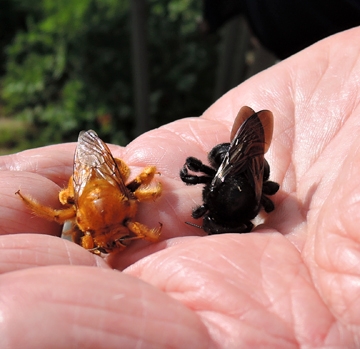
Australian beekeeper/pollination specialist Trevor Monson, a second-generation beekeeper, and his son, Jonathan and nephew Reece spent several hours last week at the Harry H. Laidlaw Jr. Honey Bee Research Facility on Bee Biology Road at the University of California, Davis. They conferred with native bee pollination specialist Robbin Thorp, distinguished emeritus professor of entomology, and pollination ecologist Neal Williams, associate professor of entomology.
Monson and his wife, Carolyn, and family of Victoria are bee pollination brokers and the largest in Australia--they broker 100,000 hives to growers. They own Monson's Honey and Pollination. Trevor is one of Australia's most frequently quoted bee experts. "His expertise is sought after at all levels of farming, forestry,industry, research, policy-making and government advisory bodies, such as the current Honey Bee Research Commission," according to a recent legislative report.
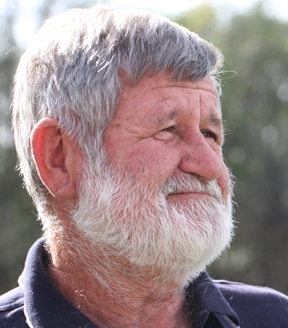
Thorp showed them a male and female Valley carpenter bee (Xylocopa varipuncta) and their nest, a chunk of sawed-off apple tree felled in Davis and transported to the Laidlaw facility. The blond, green-eyed male and the solid black female drew their attention.
The trio also toured the nearby Häagen-Dazs Honey Bee Haven, a half-acre bee friendly garden operated by the UC Davis Department of Entomology and Nematology. They admired the ceramic mosaic sculpture of a six-foot-long worker bee that anchors the garden. The sculpture, "Miss Bee Haven," is the work of self-described "rock artist" Donna Billick of Davis, co-founder and co-director of the UC Davis Art/Science Fusion Program.
During their weeklong stay in California, they met with a number of beekeepers and representatives of the bee and almond industries.
Attached Images:
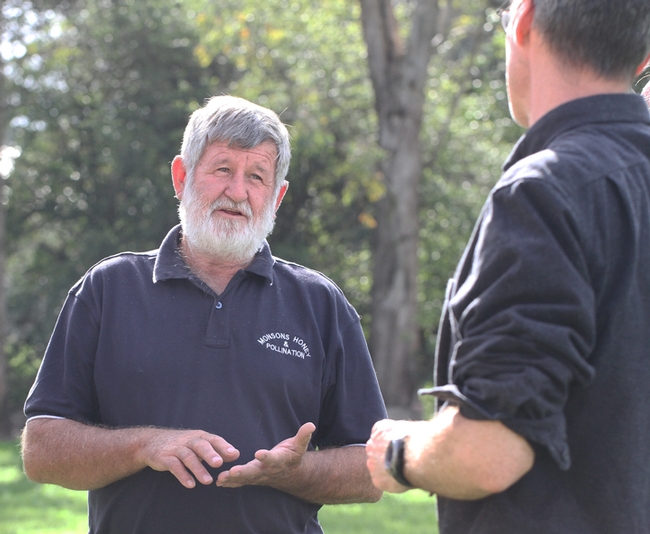
Apiarist/pollination specialist Trevor Monson (left) talks bees with pollination ecologist Neal Williams, associate professor, UC Davis Department of Entomology and Nematology. (Photo by Kathy Keatley Garvey)
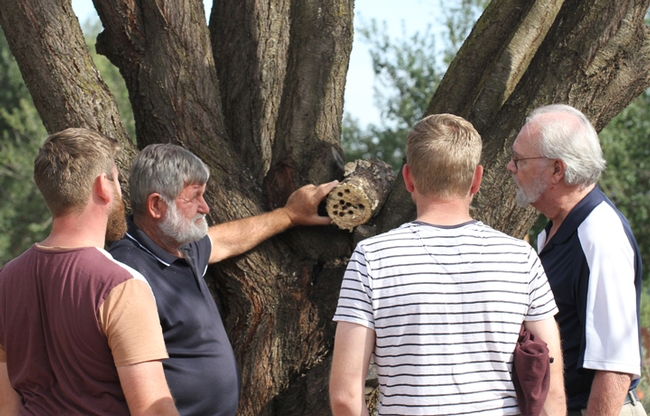
Trevor Monson (second from left) and nephew Reece and son Jonathan chat with native pollination specialist Robbin Thorp (far right), distinguished emeritus professor of entomology. They are looking at a Valley carpenter bee nest. (Photo by Kathy Keatley Garvey)
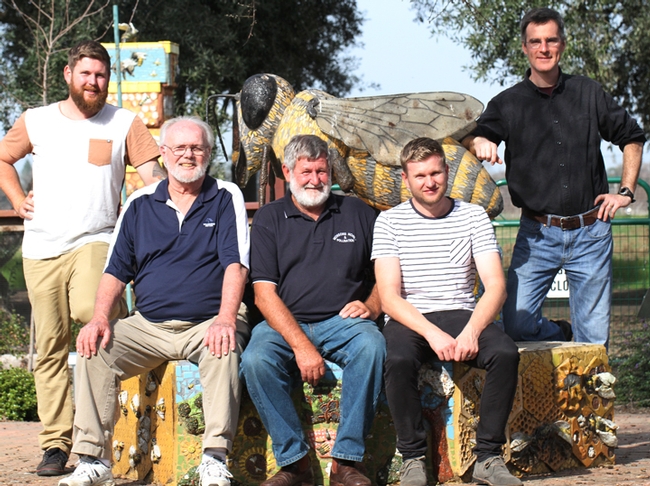
The Australian trio and two UC Davis scientists are in front of "Miss Bee Haven," the ceramic mosaic sculpture in the UC Davis honey bee garden. From left are Trevor's nephew, Reece; UC Davis native pollinator specialist Robbin Thorp, emeritus professor of entomology at UC Davis; Trevor Monson and his son, Jonathan, and in back, pollination ecologist Neal Williams, associate professor of entomology at UC Davis. (Photo by Kathy Keatley Garvey)